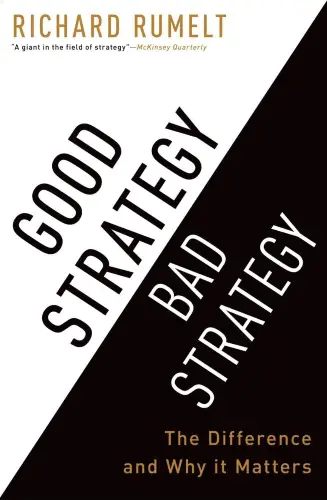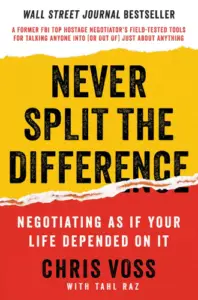Good Strategy Bad Strategy
Book Author: Richard P. Rumelt
Summary reviewed by:
Terrence Timmons
Terrence Timmons
Analyst
Bachelor of Arts (BA), University Of California, Santa Barbara 2019
With over 4 years of experience as an analyst. Terrence Timmons is committed to analyzing summaries without compromising on quality.
Good Strategy Bad Strategy: Summary
"Discover the secret sauce that distinguishes real strategy from mere wishful thinking." At the heart of Richard P. Rumelt's Good Strategy Bad Strategy: The Difference and Why It Matters lies a compelling thesis: many organizations think they have a strategy when, in reality, they are merely harboring ambitions. Rumelt, a seasoned strategist and professor at UCLA Anderson School of Management, draws on his vast experience and a plethora of historical and contemporary cases to dissect what makes a strategy effective. Unlike other personal development or problem-solving books that often rely on abstract principles, Rumelt's work is grounded in practical, actionable insights derived from rigorous analysis and real-world applications.
Rumelt argues that the cornerstone of any good strategy is a clear diagnosis of the challenge at hand, guiding policies for dealing with the challenge, and coherent actions that are designed to carry out those policies. He critiques the prevalence of 'bad strategy'—marked by fluff, failure to face challenges, and misguided objectives—and demonstrates how a 'good strategy' leverages insight, leverage, and focus to overcome obstacles and achieve significant outcomes.
The book doesn't just stop at defining and differentiating between good and bad strategies; it goes further to offer a blueprint for creating, implementing, and sustaining a good strategy. Rumelt introduces the concept of the "kernel" of a strategy, which consists of a diagnosis, a guiding policy, and coherent action. He emphasizes the importance of identifying and leveraging "proximate objectives"—goals that are challenging yet achievable within a foreseeable future. Through engaging narratives and examples, from Apple's strategic maneuvering under Steve Jobs to the turnaround stories of IBM and Starbucks, Rumelt illustrates how these components come together to form a robust strategy.
Good Strategy Bad Strategy is not a theoretical treatise but a practical guide that is replete with tools, exercises, and step-by-step advice for applying the principles of good strategy to everyday challenges. Whether you're looking to revolutionize a global corporation, steer a small business through troubled waters, or achieve personal goals, Rumelt's insights can help pave the way for effective action. By the end of the book, readers are equipped not just with the theoretical knowledge of what makes a strategy good or bad but with a practical understanding of how to apply these insights to create strategies that work in the real world.
Good Strategy Bad Strategy: Genres
Business
Business economics
Strategy
Leadership
Management
Good Strategy Bad Strategy: Themes
The Nature of Strategy: Rumelt clarifies the essence of strategy as the intersection of challenge, policy, and action. He exemplifies this through various case studies, showing how successful strategies directly address a specific challenge with coherent actions based on guiding policy.
The Pitfalls of Bad Strategy: The book identifies common traits of bad strategies, such as lack of focus, unrealistic objectives, and failure to face the problem. Through examples like the failure of certain businesses to adapt to market changes, Rumelt illustrates the consequences of bad strategy.
Leverage and Focus: Central to the book’s philosophy is the idea that good strategy works by concentrating effort on pivotal objectives through leverage. The turnaround of Starbucks, focusing on core coffee experience, is cited as a prime example.
The Importance of Insight: Rumelt stresses that insight into the forces at play in any challenge is critical to forming an effective strategy. He discusses how Apple’s insight into the consumer desire for simplicity and integration led to the development of the iPod and iTunes, revolutionizing the music industry.
Good Strategy Bad Strategy: Methodology
In penning this summary, we prioritized delivering an engaging user-focused experience, embodying the strategic wisdom of Good Strategy Bad Strategy in a way that resonates with your aspirations and challenges.
Our expert analysis dove deep into the fabric of the book, extracting crystalline insights on leverage, focus, and the pitfalls of bad strategy, ensuring the integrity of Richard P. Rumelt's original wisdom.
Finally, our synthesis not only aimed at intellectual enrichment but also at practical empowerment, equipping you with actionable strategies to navigate the complexities of both personal and professional arenas with adeptness and foresight.


Good Strategy Bad Strategy
Date Published: June 9, 2011
Disclaimer: As an Amazon Associate I earn from qualifying purchases.




